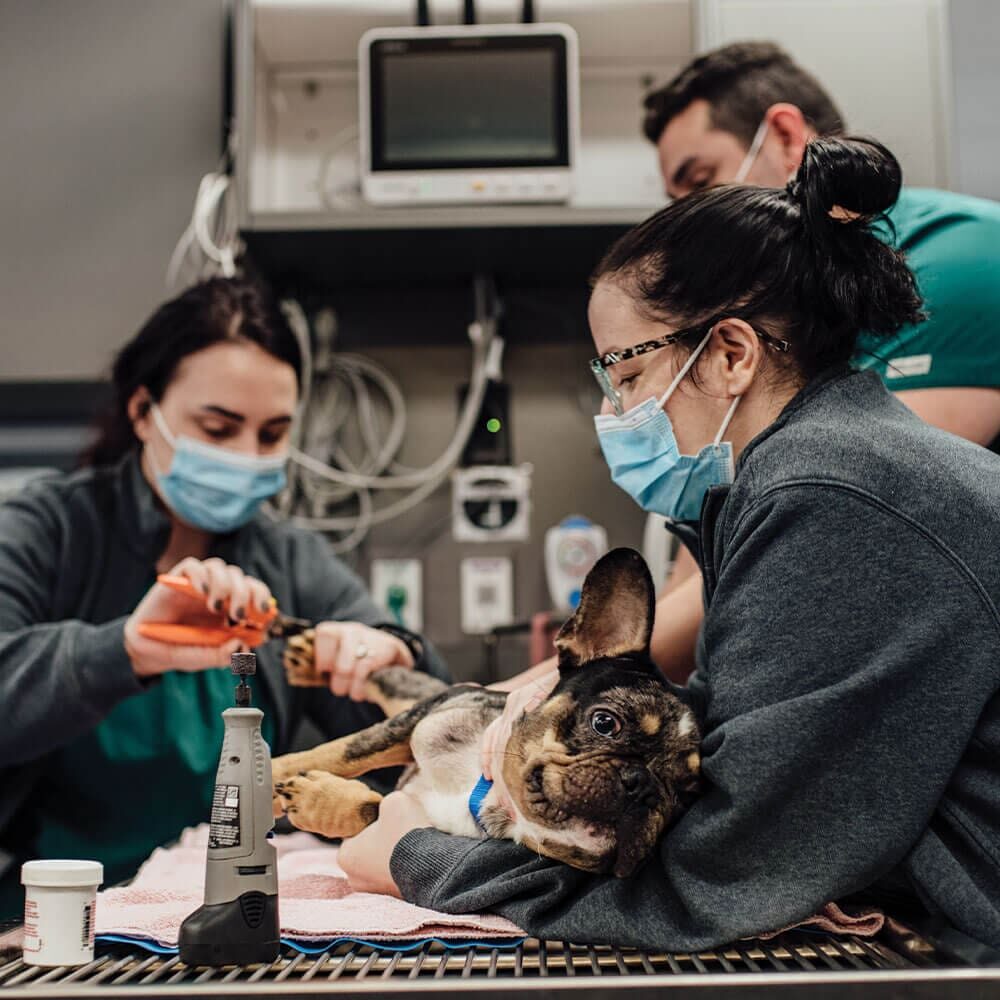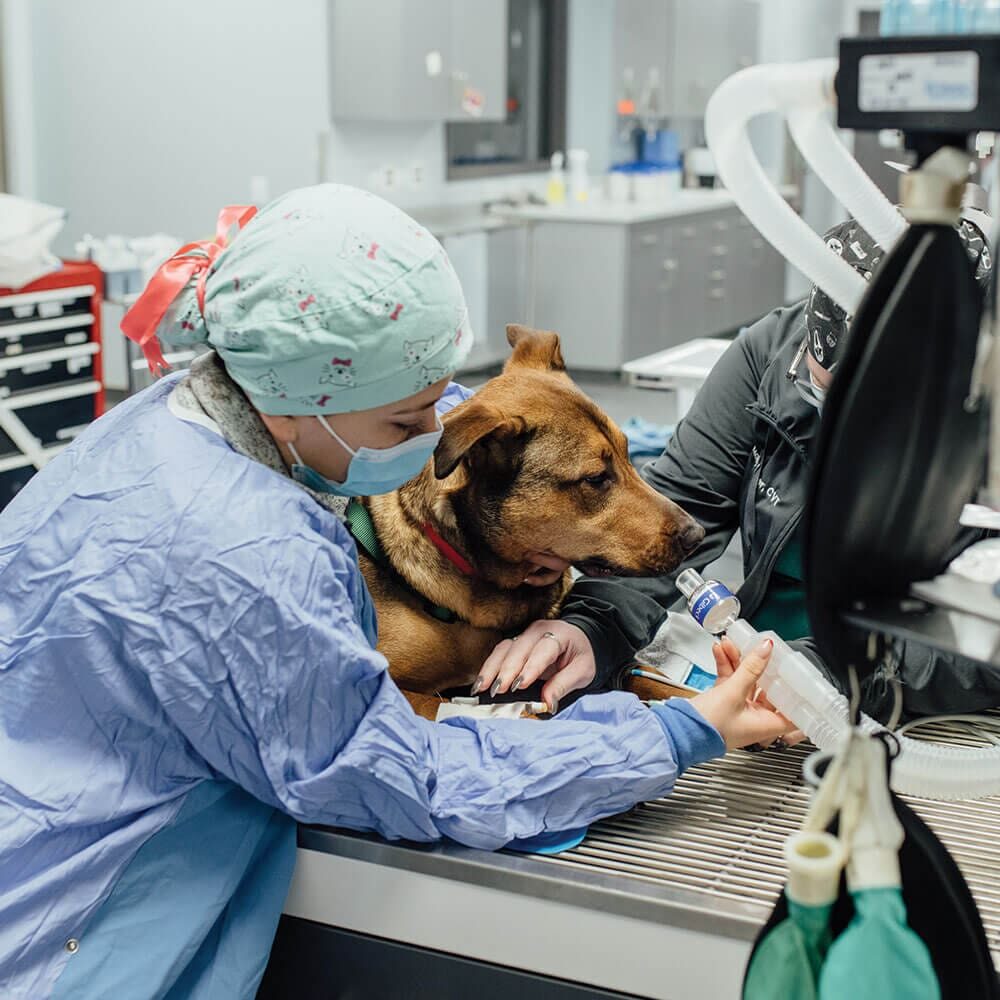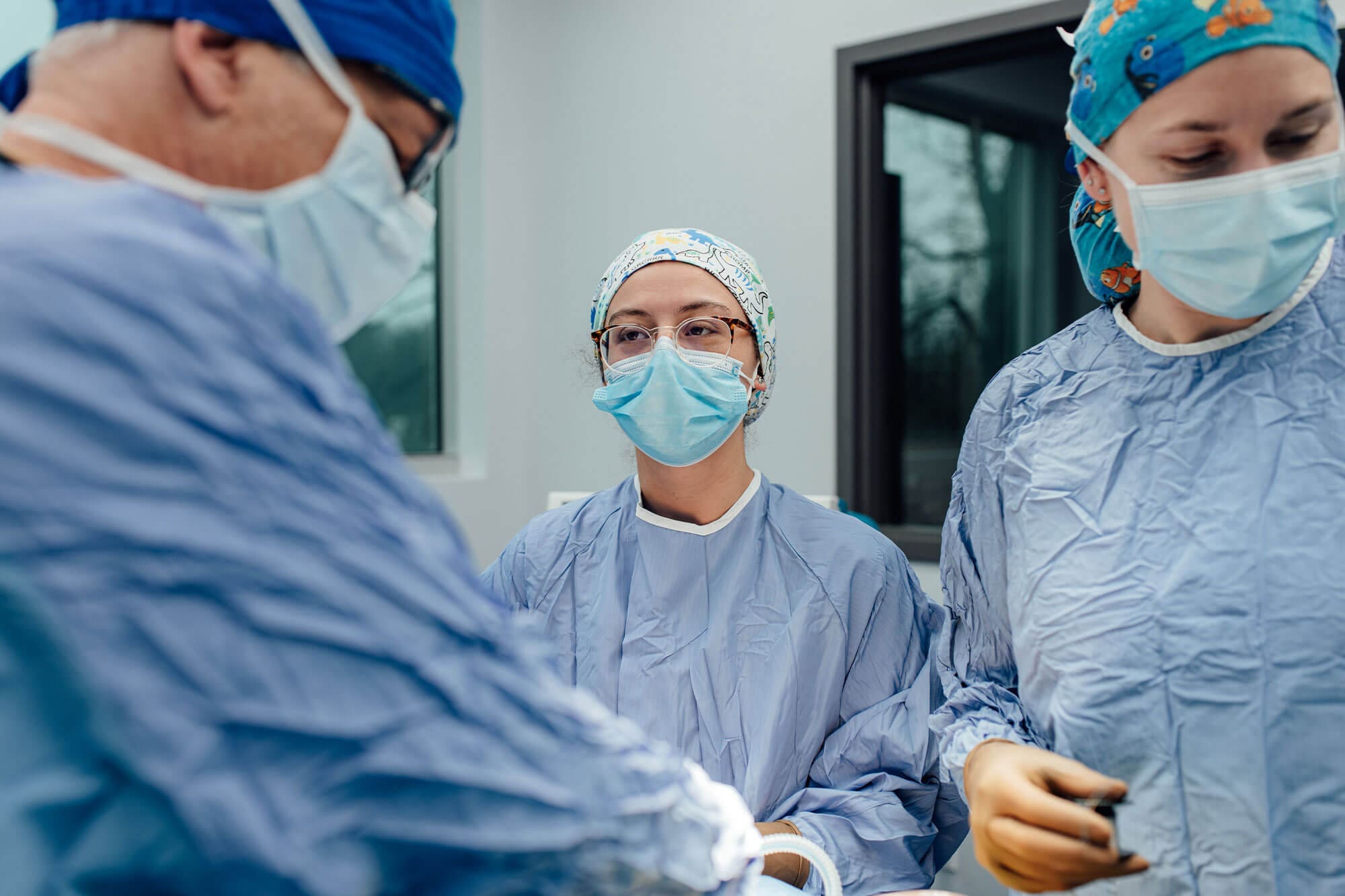Similar to human athletes, dogs can partially or fully tear a ligament similar to the ACL, which can cause knee instability, pain, inflammation, and osteoarthritis. For dogs suffering from a cranial cruciate ligament (CCL) tear, Tibial Plateau Leveling Osteotomy (TPLO) surgery offers an effective solution to relieve pain and restore stability in the knee.
Cranial Cruciate Ligament Tears in Dogs
The cranial cruciate ligament (CCL) is a vital part of your dog’s knee, keeping the joint stable and allowing smooth movement. When this ligament tears—either partially or fully—the knee loses stability, leading to pain, inflammation, and difficulty walking. CCL tears are one of the most common orthopedic injuries in dogs and often happen suddenly due to a jump, a twist, or natural wear and tear over time.
Signs of a CCL tear include:
-
Limping or holding up one hind leg
-
Swelling or tenderness around the knee
-
Stiffness, especially after rest or exercise
-
Difficulty with everyday activities like jumping or running
CCL tears are particularly common in medium and large dog breeds, as well as in active dogs whose high-energy lifestyles put extra stress on their joints.


Indications for TPLO Surgery
TPLO surgery is often the best option for dogs with partial or complete CCL tears, particularly if they are:
-
Large or Active:
Larger dogs and those with an active lifestyle tend to benefit more from TPLO’s durable, long-term stability.
-
Experiencing Ongoing Lameness:
If conservative treatments haven’t helped and your dog is still limping or in pain, surgery may be necessary to improve their quality of life.
While non-surgical options may work for some smaller, less active dogs, TPLO surgery is highly recommended for larger breeds and high-energy dogs to restore full mobility and comfort.
The choice between laparoscopic and endoscopic gastropexy may depend on your dog's size, anatomy, and your surgeon's preference.
TPLO Procedure
TPLO surgery is a sophisticated procedure that restructures the knee to restore stability without relying on the damaged cranial cruciate ligament. Here’s an in-depth look at what happens during the surgery:
-
Preparing the Knee Joint:
Our surgical team makes a small incision over the knee joint, allowing us to carefully examine the area to confirm the extent of CCL damage. Any damaged or inflamed tissue around the joint is also addressed, which may include removing any torn ligament fragments and treating meniscal tears (a common complication in CCL injuries).
-
Shaping the Tibial Plateau:
The tibia (shin bone) has a natural slope that, without an intact CCL, causes the femur (thigh bone) to slide backward during weight-bearing. To correct this, our surgeon makes a precisely measured, semi-circular cut in the top part of the tibia, allowing us to rotate the tibial plateau, changing the angle of the bone so it becomes level and stable when your dog bears weight.
-
Securing the Adjustment:
Once the tibial plateau is repositioned, it is stabilized with a specialized bone plate and screws. This hardware holds the bone in its new alignment as it heals, allowing the knee to function stably without needing the original CCL for support.
TPLO surgery is designed to change the biomechanics of your dog’s knee so that even without the CCL, the joint remains stable and functional. This approach minimizes the risk of future joint damage, helps slow the progression of arthritis, and significantly improves your dog’s long-term comfort and mobility.
Recovery and Aftercare
Recovery from TPLO surgery is a gradual process that requires patience and careful management to ensure optimal healing. With the right care, most dogs start to bear weight on the leg within days of surgery and regain strength over the following months.
At Veterinary Specialty Center, we provide customized TPLO aftercare programs designed to carefully and effectively restore your dog’s strength and mobility. For helpful videos regarding postoperative care, such as icing, PROM exercises, and assisting elimination, please view our TPLO aftercare resources.
TPLO Prognosis
TPLO surgery has a high success rate in dogs. Most dogs experience a significant reduction in pain and a return to normal activity levels after recovery. Over 90% of dogs regain full or near-full function in the affected leg, allowing them to enjoy running, playing, and going on walks without discomfort.
While TPLO surgery is generally very effective, there are a few factors to consider:


-
Arthritis Risk:
Dogs who have had a CCL tear are at a higher risk for developing arthritis in the knee over time. However, TPLO surgery can slow the progression of arthritis by stabilizing the joint.
-
Other Leg Injuries:
Dogs who tear one CCL are at an increased risk of tearing the other, likely due to shared factors such as genetics, body structure, or activity level. Keeping your dog at a healthy weight and well-conditioned can help prevent future injuries.
Is TPLO Right for Your Dog?
Your veterinarian or veterinary surgeon can guide you in deciding if TPLO surgery is the best option for your dog based on factors like age, size, activity level, and overall health. For many dogs with CCL tears, TPLO offers the best chance at regaining an active, pain-free lifestyle.
If you have any questions or are considering TPLO for your dog, please reach out to us. We’re here to help you make the best decision for your dog’s health and happiness.

